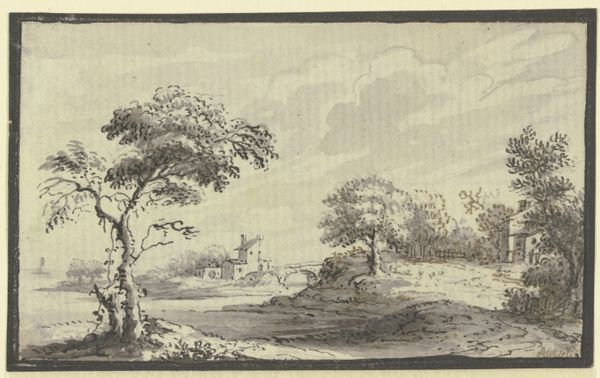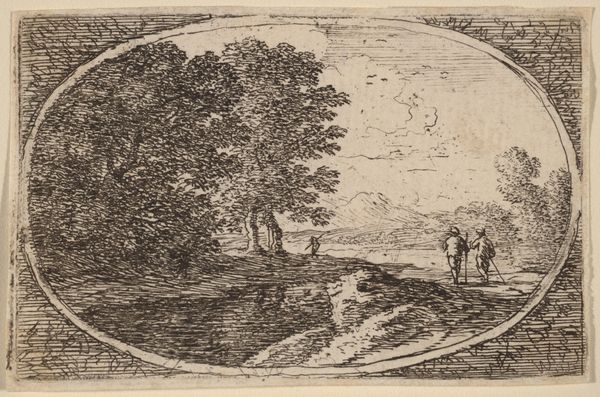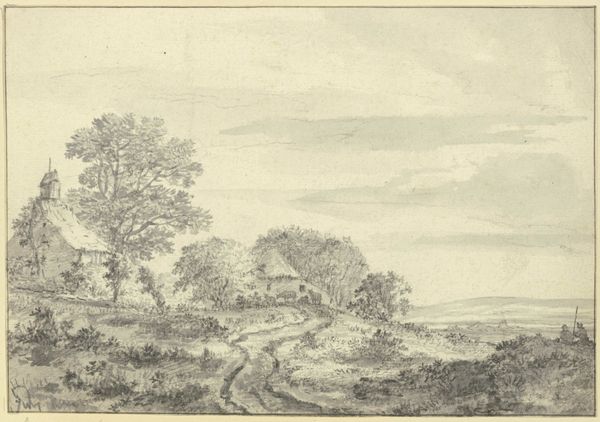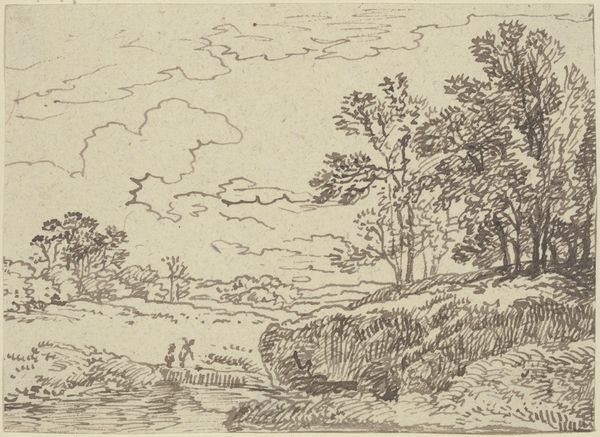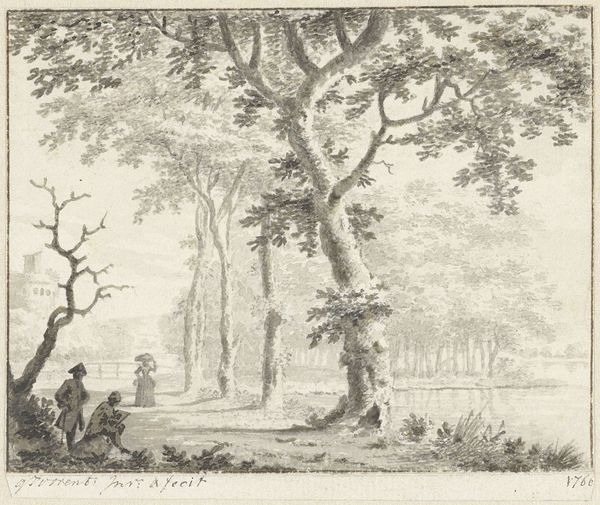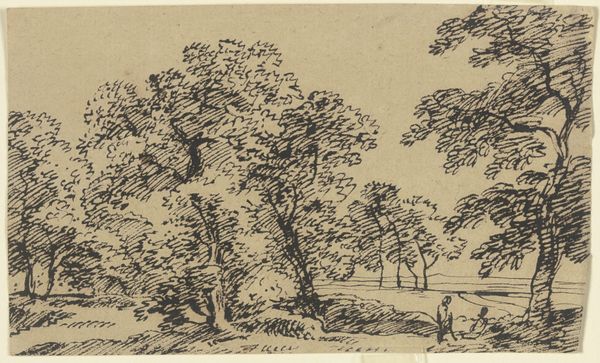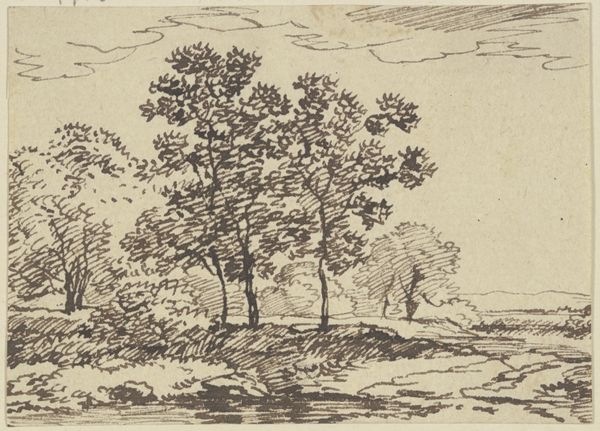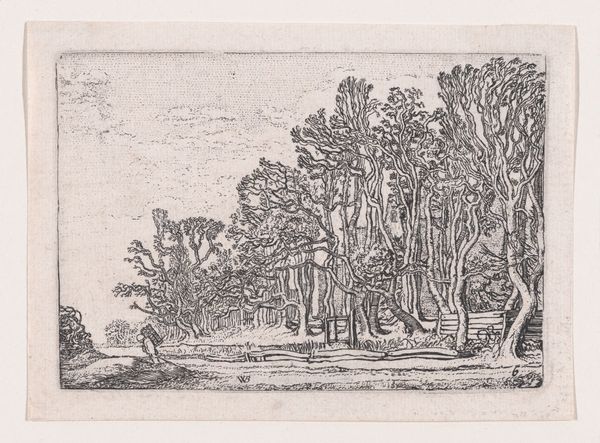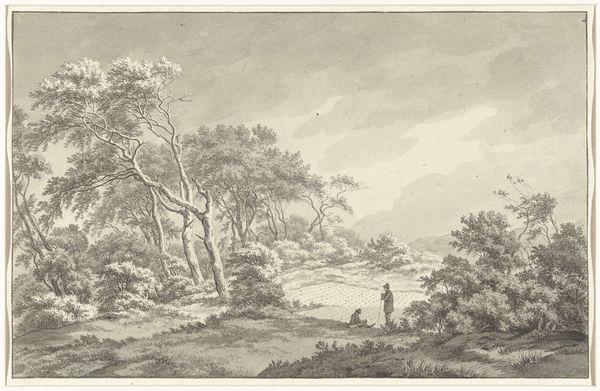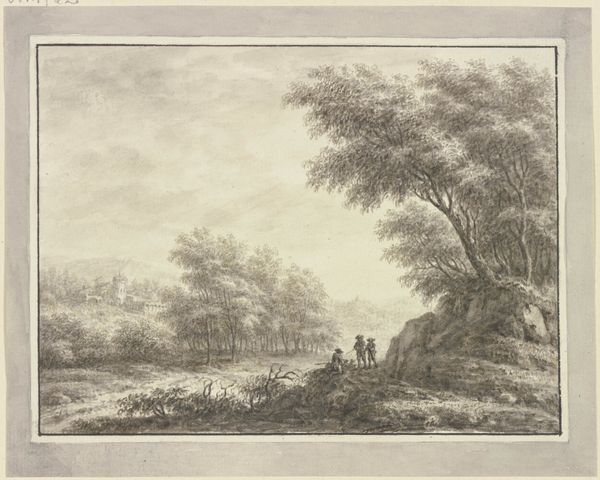
drawing, ink, indian-ink
#
landscape illustration sketch
#
drawing
#
netherlandish
#
quirky sketch
#
pen illustration
#
pen sketch
#
landscape
#
personal sketchbook
#
ink
#
indian-ink
#
pen-ink sketch
#
15_18th-century
#
pen work
#
sketchbook drawing
#
storyboard and sketchbook work
#
sketchbook art
Copyright: Public Domain
Curator: Before us we have "Gezigt by Cowerden in Drenthe," a landscape captured in pen and ink by Hendrik Tavenier. It resides in the Städel Museum collection. Editor: Immediately, I'm struck by the dichotomy of textures; the rough, almost chaotic energy of the tree against the more carefully rendered detail of the tower in the distance. It feels like a study in contrasts. Curator: Yes, Tavenier's technique highlights precisely that. Look at the linework; the density creating form, especially the way he uses hatching and cross-hatching to give volume to the tree's canopy. Note also how this is replicated in the thick dark brush strokes used in the grass areas of the sketch. Editor: And it's not just about form but function, I think. Consider the social context. This type of landscape sketch became popular with the rise of a middle class who enjoyed depicting their travels and social status through land ownership and travel sketches. What statements do you believe that Tavenier is hoping to evoke with this picture? Curator: Undoubtedly, the composition adheres to established conventions, but what truly intrigues me is its modernity. Consider the subject selection—it is more rural, rather than some heroic historic depiction of the elite. It marks a growing taste of Dutch painters depicting subjects that celebrated everyday life. The dark heavy, laden form of the tree itself feels weighty and important as a result of its size. The building tower behind seems secondary. Editor: And, perhaps that tree could also function as a subtle commentary on Dutch resilience against natural elements, the gnarled old giant dominating and framing the shot, standing proudly amidst a controlled, man-made agricultural landscape. In his depiction, it could be stated, Tavenier acknowledges nature, as a character within Dutch identity. Curator: It is compelling how a simple drawing can elicit such layered interpretation. Tavenier truly excelled at more than the study in rural geography; the piece reveals socio-economic undertones, of rural Netherlands life. Editor: Indeed, exploring the interplay of technique, symbolism, and cultural context enriches our understanding and reminds us of the value of such works to communicate culture to audiences over hundreds of years.
Comments
No comments
Be the first to comment and join the conversation on the ultimate creative platform.
